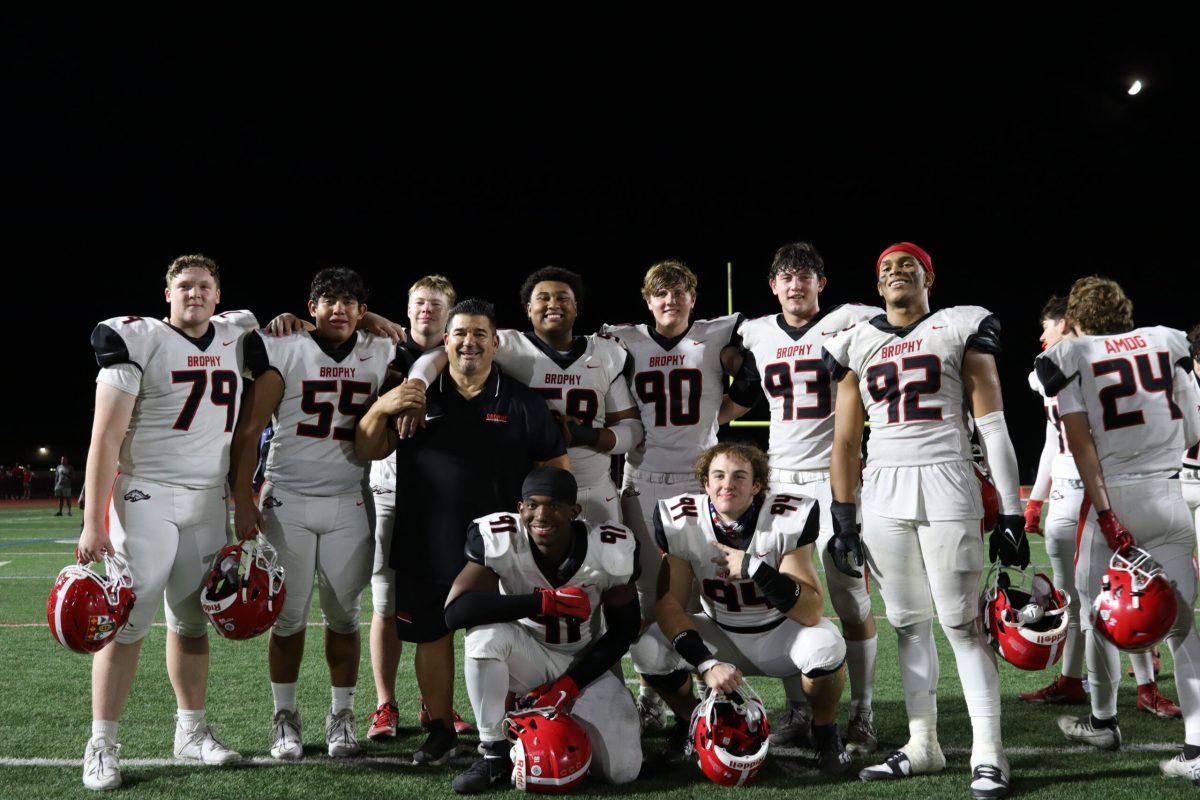By Hayden Welty ’19
THE ROUNDUP
240,000 impressions in a 28-day period or roughly 8,400 impressions a day.
That is how many people looked at, @brophysports, The Roundup’s sports Twitter account’s, tweets during the last month, according to analytics.twitter.com.
As a first year, first-time reporter, knowing that tens of thousands of people are about to read your tweets is an unbelievable amount of pressure. For me, it kind of felt as though I was a celebrity on Twitter whose every word would be analyzed.
I “tweeted” my first game on Sept. 30th at Phoenix College when Brophy faced off against the Hamilton Huskies. For my first time, I felt like I did a pretty solid job and was happy with the work I put out there.
However, when I woke up the next morning and checked the website, I was dumbfounded by the fact that, in a little over 12 hours, tens of thousands of people had looked at my tweets. By the end of the day on Saturday, 54,047 people, in total, had viewed what I said.
To put that in perspective, a 16 to-20 page edition of The Roundup is given out on Brophy’s campus five times a year, and I’d estimate about 1,000 kids, at the very least, look it over and read the headlines.
For a high school newspaper, I think that’s very, very impressive. But for 54,000 people to look at that same kind of material in just one day blows that figure completely out of the water.
Based on these statistics, it’s reasonable to assume that a significant portion of The Roundup’s readers only look at our Twitter account.
If exponentially more people are going to look at our sports coverage than our other content, I think that, in order to attract more readers to our other sections, we should make the quality of our coverage of sports as good as it can get.
After perusing the account and looking for some things we could improve on, I felt like I had a couple of ideas my publication could use to enrich our tweets.
First, if you just look at the top the Twitter page, we have thousands and thousands of tweets, yet barely over a hundred photos and videos.
Secondly, along with “impressions,” Twitter also gives its users something called an “engagement rate,” which is the percentage of people that, along with viewing the tweet, also clicked on it, liked it or retweeted it.
Our rates were usually pretty abysmal, usually coming in at anywhere from one to three percent.
The Roundup already has anywhere from three to six photographers out on the field taking photos, and other campus organizations, like yearbook, sometimes have a couple of photographers on the field as well.
It would be great if we could get some of the photographers, who were on the field already, to let us use some of their photos in our tweets.
During the next week after the Hamilton game, I tried to implement this new idea when the Broncos faced off against the Basha Bears at Brophy’s homecoming game. I knew there would be a ton of photographers on the field, so I thought it would be a good game to try it out.
Bryce Owen ’17 and I took the photographer’s SD cards and plugged it into a port on my Macbook computer. The photos would then pop up, similar to how they would if you plugged in a flash drive, and then I saved them on my computer.
From there, I could simply access Twitter using Safari and post live updates.
However, I ran into some logistical problems when trying to carry out my idea: a lack of Wifi and effective coordination slowed the upload times tremendously.
Although we could receive Wifi on the field, it wasn’t favorable. Sometimes, I would be sitting there for minutes, trying and failing to get the tweet to upload.
Also, although we got better as the game went on, it was sometimes tough to find a photographer who had a relevant photo we could use; sometimes, I feel like we sacrificed the relevancy of the picture and just uploaded it anyway because it looked cool.
For example, I tweeted about how the other team scored, but the photo that accompanied that text was of our running back being trampled by the defense. Sure, the photo probably conveyed the same emotion, but it wasn’t really relevant to what we were saying in the tweet.
But as the game progressed, instead of looking for photographers, they came to us, asking if we could post an excellent photo they took.
In addition, as we were trying to adjust to this new process, we did mess up some of the information: Whether it was messing up names or reporting incorrect yards, we were not always accurate when reporting the information. And that, as a journalist, is inexcusable.
At the end of the day, however, the experiment was pretty successful in two main ways: the overall quality of tweets improved, and the engagement rates increased dramatically.
If you just look through the tweets of that game, the entire Twitter feed simply looks more interesting and informative. The statement “a picture is worth a thousand words” really rings true in this case.
The engagement rates also went through the roof. One tweet even had a ridiculously high 25.7 percent engagement rate, which demonstrates the effect photos can have on capturing someone’s attention.
The overall range of engagement rates rose from the usual one to six percent up to seven to 25 percent.
These statistics are even more promising considering Brophy ended up losing the game, which means fewer retweets, likes, and overall buzz.
If Brophy managed to extend their 7-game winning streak on that Homecoming Night, I can’t imagine how much more impressive those statistics could have been.
Going forward, I feel like the best route The Roundup could take would be to post photos when photos make sense and to continue to tweet text when that makes sense.
We have to continue to get the statistics, names and other facts correct, even if that means not posting a photo. But if we have the opportunity, photos are a excellent way to improve our coverage of the game.


















